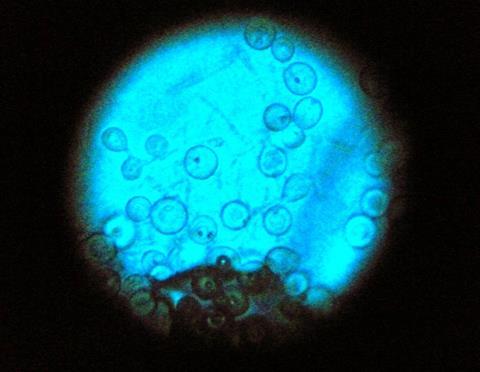The fungal-derived meroterpenoid pyripyropene A exhibits significant biological activities, including potent inhibition of acyl-CoA:cholesterol acyltransferase (ACAT) and high insecticidal efficacy against aphids.

A semi-synthetic derivative of pyripyropene A, afidopyropen, has been developed by BASF as a novel insecticide and commercially launched under the trade name Inscalis® in multiple countries worldwide, including the United States, India, China, and Australia.
READ MORE: Research shows feasting fungi could revolutionize carbon-fiber recycling
READ MORE: Nature’s pesticides: unleashing the potential of microbial interactions
The research team led by Jinzhong Xu at the Institute of Biology and Pharmacy, Ocean College of Zhejiang University, designed a reconstituted biosynthetic gene cluster (BGC) for producing structurally diversified deacetylated pyripyropenes, using the native pyripyropene A BGC from the wild-type strain Aspergillus fumigatus Af 293 as a template.
Through three rounds of transformation, seven biosynthetic genes were integrated into the chassis strain Aspergillus nidulans LO8030, resulting in the heterologous expression strains SSJ13 capable of producing multiple novel pyripyropenes.
Transformed strain
By scaling up the fermentation of the transformed strain SSJ13, five novel heterologously produced pyripyropenes were isolated and identified: 1-keto-pyripyropene E (1), 13-hydroxyl-1-keto-pyripyropene E (2), deacetyl-pyripyropene G (3), 11-deoxo-deacetyl-pyripyropene A (4), and 1-keto-11-deoxo-deacetyl-pyripyropene A (5), along with one known compound, deacetyl-pyripyropene E (6). Their structures were unequivocally characterized by MS and NMR spectroscopy, with compounds 1, 2, and 5 representing the first examples of 1-ketone pyripyropenes.
The team characterized the aphicidal activity of the five novel pyripyropenes, providing valuable insights into structure-activity relationships and demonstrating their significant potential for developing next-generation pyripyropene-based insecticides.
Professor Jinzhong Xu stated: “This study establishes a foundation for the heterologous production of novel pyripyropene analogues and offers a strategic framework for further exploration of the biosynthetic pathways of this class of compounds.”







No comments yet